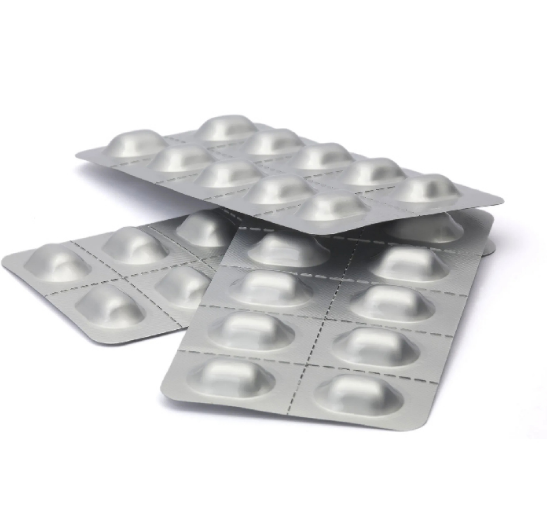Aluminum is widely used in pharmaceutical packaging due to its unique properties and advantages. Its use in this industry can be attributed to factors such as its barrier properties, lightweight nature, durability, versatility, and recyclability. In this news, I will delve into the reasons why aluminum is preferred for pharmaceutical packaging.

Aluminum is an excellent barrier material, particularly against moisture, oxygen, light, and other environmental factors that can degrade the quality and efficacy of pharmaceutical products. It acts as a protective layer, preventing the ingress of moisture and oxygen, which can cause chemical reactions, degradation, or spoilage of sensitive medications. This barrier property helps to maintain the stability, potency, and shelf life of pharmaceutical products.
Aluminum is a lightweight material, making it an ideal choice for pharmaceutical packaging. It offers a high strength-to-weight ratio, allowing for the production of lightweight packaging solutions. This lightweight characteristic has several advantages, including cost-effectiveness in terms of transportation and reduced energy consumption during manufacturing and distribution. Lightweight aluminum packaging also provides convenience to end-users, making it easier to handle and transport pharmaceutical products.
Aluminum is known for its durability and resistance to corrosion. This property ensures that pharmaceutical products remain protected throughout their shelf life, even under challenging environmental conditions. Aluminum packaging for medicines maintains its integrity, preventing the entry of contaminants, and ensuring the quality and safety of the enclosed medications. The durability of aluminum also ensures that the packaging can withstand external impacts, ensuring the integrity of the pharmaceutical product during transportation and handling.
Aluminum offers great versatility in terms of packaging design and customization. It can be easily molded, formed, or shaped into various packaging formats, such as blister packs, sachets, tubes, and containers of different sizes and shapes. This versatility allows for the efficient packaging of different types of pharmaceutical products, including tablets, capsules, powders, creams, and liquids. Additionally, aluminum packaging can incorporate features such as child-resistant closures, tamper-evident seals, and easy-open mechanisms, enhancing safety and user convenience.
Aluminum packaging offers excellent visual appeal and can be customized with attractive designs, colors, and branding elements. The surface of aluminum can be printed or decorated with high-quality graphics, logos, and product information. This customization enhances brand recognition and helps to differentiate pharmaceutical products in the market. The aesthetic appeal of aluminum packaging also contributes to consumer perception and can influence purchasing decisions.
Aluminum is a highly recyclable material, and its use in pharmaceutical packaging aligns with sustainability goals. It can be recycled repeatedly without loss of quality or properties, making it an environmentally friendly choice. The recycling process for aluminum consumes significantly less energy compared to primary production, leading to reduced carbon emissions. By using aluminum packaging, the pharmaceutical industry can contribute to resource conservation and reduce waste generation.
Aluminum is considered safe for pharmaceutical packaging and is approved by regulatory authorities such as the U.S. Food and Drug Administration (FDA) and the European Medicines Agency (EMA). It is non-toxic, non-reactive, and inert, ensuring that it does not interact with the pharmaceutical product or compromise its safety. Aluminum packaging also meets stringent quality standards, ensuring compliance with regulations and guidelines for pharmaceutical packaging materials.
Aluminum is widely used in pharmaceutical packaging due to its exceptional barrier properties, lightweight nature, durability, versatility, recyclability, and safety. These properties make it an ideal material for protecting pharmaceutical products from environmental factors, ensuring their stability and efficacy. Moreover, aluminum packaging offers branding opportunities, customization options, and environmental benefits, making it a preferred choice for the pharmaceutical industry.
We can provide six types of packaging, including four-side sealing paper and plastic packaging, foil packaging, soft double aluminum packaging, hard double aluminum packaging, bottle and full package. What’s more, BangBeiJian has a hard capsule, tablet, powder, tea, granules, effervescent tablets, probiotics, and many other dosage form production lines. If you want to know more, please visit our products.
Copyright © Shijiazhuang Huanyisheng Technology Co., Ltd. All Rights Reserved |Sitemap
